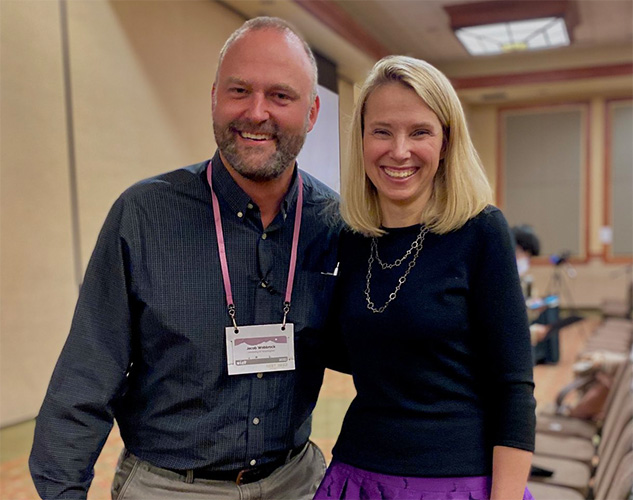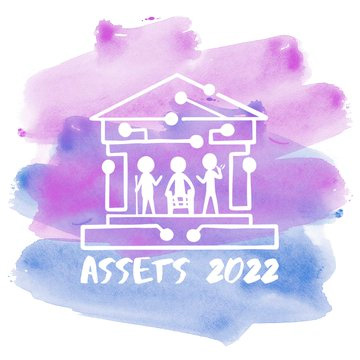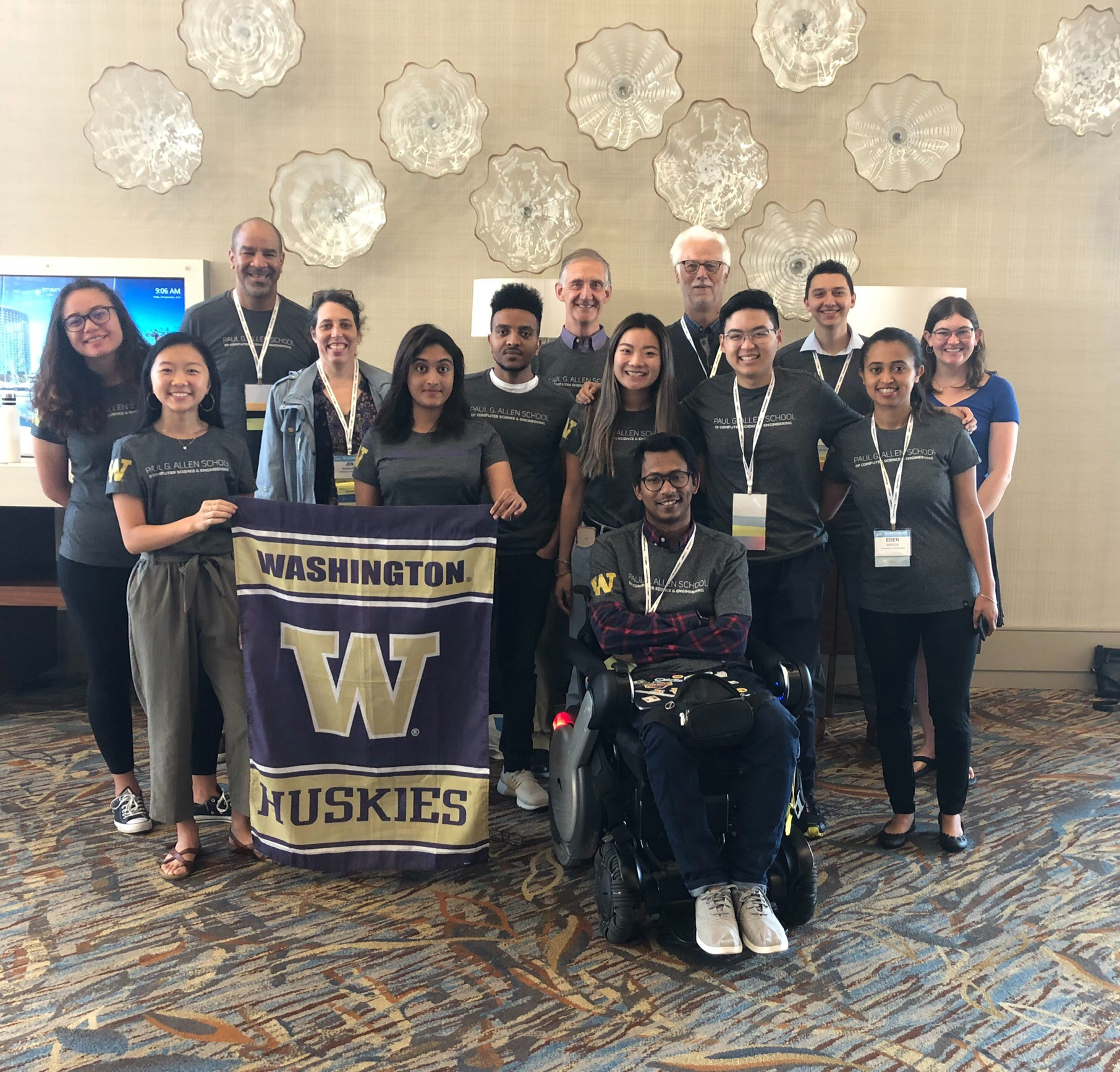May 13, 2025 A central figure in Seattle’s human-computer interaction (HCI) community and beyond, Fogarty has made key contributions in accessibility, sensor-based interactions, interactive machine learning, and personal health informatics. He has played a pivotal role in founding and growing Design, Use, Build (DUB) — the UW’s cross-campus HCI alliance bringing together faculty, students, researchers and industry partners. “I am honored to be among the SIGCHI Academy Class of 2025,” Fogarty said. “I’m grateful for the amazing students and collaborators…
Category: Conferences
CHI 2025: CREATE Papers and Presentations
March 24, 2025 Papers, presentations, and workshops from CREATE researchers at CHI 2025, the ACM CHI conference on Human Factors in Computing Systems. We appreciate your patience as we continue to update this page. The conference takes place April 26 – May 1 in Yokohama Japan. Awards and honors Congratulations to these 2025 ACM SIGCHI honorees: Papers A Stakeholder Value Framework for Augmentative and Alternative Communication Annuska Zolyomi (CREATE faculty), Varsha Koushik, Dinara Asyet, Linh H. Huynh. “A Tool for…
Funding and training opportunities – Winter 2025
January 21, 2025 We’ve rounded up some great opportunities for accessibility research, funding, and training. Most notably, deadlines are approaching for two CREATE grants: ACM CHI Workshop on Aging in Place call for participation The ACM CHI workshop on Technology Mediated Caregiving for Older Adults Aging in Place focuses on research around technological supports for caregiving, specific to older adults as they age and begin to experience cognitive changes. See also
CREATE at ASSETS 2024: Papers & Workshops
September 25, 2024 If we missed any CREATE research, please email Liz Diether-Martin with the details. Awards ASSETS 2024 Best Paper Award:Engaging with Children’s Artwork in Mixed Visual-Ability FamiliesArnavi Chheda-Kothary, Jacob O. Wobbrock (CREATE associate director), Jon E. Froehlich (CREATE associate director) ASSETS 2024 Best Demo Award:Touchpad Mapper: Examining Information Consumption from 2D Digital Content Using Touchpads by Screen CREATE Ph.D. alumni Ather Sharif and Venkatesh Potluri, Jazz Ang (CREATE Master’s student), Jacob O. Wobbrock (CREATE associate director), Jennifer Mankoff (CREATE Director) Papers…
Hard Mode: Accessibility, Difficulty and Joy for Gamers With Disabilities
Video games often pose accessibility barriers to gamers with disabilities, but there is no standard method for identifying which games have barriers, what those barriers are, and whether and how they can be overcome. CREATE and Allen School Ph.D. student Jesse Martinez has been working to understand the strategies and resources gamers with disabilities regularly use when trying to identify a game to play and the challenges disabled gamers face in this process, with the hopes of advising the games…
DUB hosts para.chi event
March 1, 2024 Para.chi is a worldwide parallel event to CHI ’24 for those unable or unwilling to join CHI ‘24. UW Design. Use. Build. (DUB) is hosting para.chi.dub with members of the DUB team–and maybe you. The event includes live session for accepted virtual papers, networking opportunities, and will be accessible for students and early career researchers locally and online Do you have a virtual paper and wish to get feedback from a live audience? Perhaps you have a…
UW News: Can AI help boost accessibility? CREATE researchers tested it for themselves
November 2, 2023 | UW News Generative artificial intelligence tools like ChatGPT, an AI-powered language tool, and Midjourney, an AI-powered image generator, can potentially assist people with various disabilities. They could summarize content, compose messages, or describe images. Yet they also regularly spout inaccuracies and fail at basic reasoning, perpetuating ableist biases. This year, seven CREATE researchers conducted a three-month autoethnographic study — drawing on their own experiences as people with and without disabilities — to test AI tools’ utility for accessibility. Though researchers…
A11yBoard accessible presentation software
October 30, 2023 | UW News A team led by CREATE researchers has created A11yBoard for Google Slides, a browser extension and phone or tablet app that allows blind users to navigate through complex slide layouts, objects, images, and text. Here, a user demonstrates the touchscreen interface. Team members Zhuohao (Jerry) Zhang, Jacob O. Wobbrock, and Gene S-H Kim presented the research at ASSETS 2023. Screen readers, which convert digital text to audio, can make computers more accessible to many…
ASSETS 2023 Papers and Posters
October 4, 2023 As has become customary, CREATE faculty, students and alumni will have a large presence at the 2023 ASSETS Conference. It’ll be quiet on campus October 23-25 with these folks in New York. Papers and presentations How Do People with Limited Movement Personalize Upper-Body Gestures? Considerations for the Design of Personalized and Accessible Gesture InterfacesMonday, Oct 23 at 11:10 a.m. Eastern time. Momona Yamagami, Alexandra A Portnova-Fahreeva, Junhan Kong, Jacob O. Wobbrock, Jennifer Mankoff Understanding Digital Content Creation…
Research at the Intersection of Race, Disability and Accessibility
October 13, 2023 What are the opportunities for research to engage the intersection of race and disability? What is the value of considering how constructs of race and disability work alongside each other within accessibility research studies? Two CREATE Ph.D. students have explored these questions and found little focus on this intersection within accessibility research. In their paper, Working at the Intersection of Race, Disability and Accessibility (PDF), they observe that we’re missing out on the full nuance of marginalized…
CREATE Open Source Projects Awarded at Web4All
July 6, 2023 CREATE researchers shone this spring at the 2023 Web4All 2023 conference that, in part, seeks to “make the internet more accessible to the more than one billion people who struggle to interact with digital content each day due to neurodivergence, disability or other impairments.” Two CREATE-funded open source projects won accolades. Best Technical Paper award:Understanding and Improving Drilled-Down Information Extraction from Online Data Visualizations for Screen-Reader Users Authors: Ather Sharif, Andrew Mingwei Zhang, CREATE faculty member Katharina…
Wobbrock Co-leads ACM UIST Conference, Brings Accessibility to the Conversation

CREATE founding Co-Director Jacob O. Wobbrock served as General Co-Chair for ACM User Interface Software and Technology (UIST) 2022, held at the end of October. Nearly 500 people traveled to beautiful Bend, OR to share their latest innovations in user interface software and technology from fabrication and materials, to VR and AR, to interactive tools and interaction techniques. UIST showcased the very best inventive research in the field of human-computer interaction. “Attending UIST is like attending an exclusive preview of…
CREATE Leadership at ASSETS’22 Conference

CREATE Associate Director Jon Froehlich was the General Chair for ASSETS’22, the premier ACM conference for research on the design, evaluation, use, and education related to computing for people with disabilities and older adults. This year, over 300 participants from 37 countries engaged with state-of-the-art research in the design and evaluation of technology for people with disabilities. UW CREATE was a proud sponsor of ASSETS’22. Keynote speaker Haben Girma is the first Deafblind graduate of Harvard Law School and a…
Accessible CS Education workshop focuses on inclusive experiences
Amid a global pandemic, innovative thinkers have been hard at work developing plans to improve equity in modern learning environments. The Accessible Computer Science Education Fall Workshop was held November 17-19, 2020, and jointly sponsored by Microsoft, The Coleman Institute for Cognitive Disabilities, and CREATE. Each day of the event focused on strategies to improve classroom experiences for students and faculty with disabilities. You can watch recorded sessions where speakers provided a wide range of perspectives on computer science pedagogy…
CREATE presence at Tapia

Many members of CREATE were in attendance at the 2019 Tapia Conference. Jennifer Mankoff gave a plenary speech (CMD-IT Interview). Accessibility played a big role at TAPIA, and AccessComputing, a partner of CREATE, had a big presence.